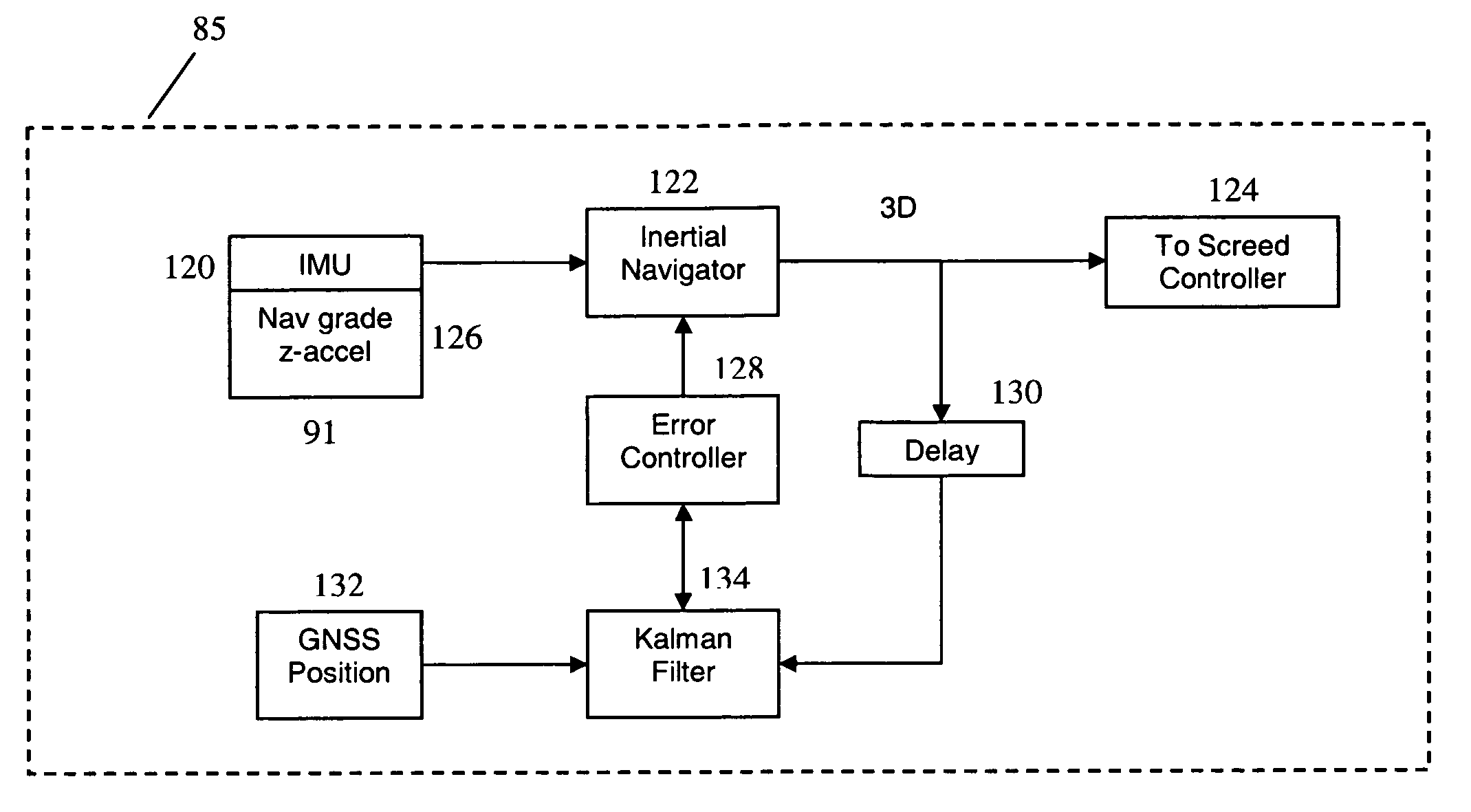Systems and methods for computing vertical position
a technology of vertical position and system, applied in the field of apparatus and methods to accurately compute vertical position, can solve the problems of high cost of setting up and taking down stringlines, inconvenient operation, and numerous drawbacks of stringline systems, and achieve the effect of reducing errors
- Summary
- Abstract
- Description
- Claims
- Application Information
AI Technical Summary
Benefits of technology
Problems solved by technology
Method used
Image
Examples
Embodiment Construction
[0029]In an embodiment, an inertial navigation system is combined with a Global Navigation Satellite System (“GNSS”) to obtain a vertical position for construction equipment, such as a paver for example. This combination utilizes the attributes of GNSS and inertial navigation systems and mitigates the inherent limitations of each system when used alone. For example, an inertial navigation system may include navigation-grade accelerometers. Such a system is capable of providing near zero latency and very low short-term noise; while a GNSS offers long-term error stability. It will be understood by a person of ordinary skill in the art that a navigation-grade inertial system contains gyroscopes and accelerometers that are sufficiently accurate to provide less than 1.5 km drift per hour. However, while navigation grade inertial systems are useful, such a system is not a required element of each embodiment described in the present disclosure. Nevertheless, it has been found advantageous ...
PUM
 Login to View More
Login to View More Abstract
Description
Claims
Application Information
 Login to View More
Login to View More - R&D
- Intellectual Property
- Life Sciences
- Materials
- Tech Scout
- Unparalleled Data Quality
- Higher Quality Content
- 60% Fewer Hallucinations
Browse by: Latest US Patents, China's latest patents, Technical Efficacy Thesaurus, Application Domain, Technology Topic, Popular Technical Reports.
© 2025 PatSnap. All rights reserved.Legal|Privacy policy|Modern Slavery Act Transparency Statement|Sitemap|About US| Contact US: help@patsnap.com



